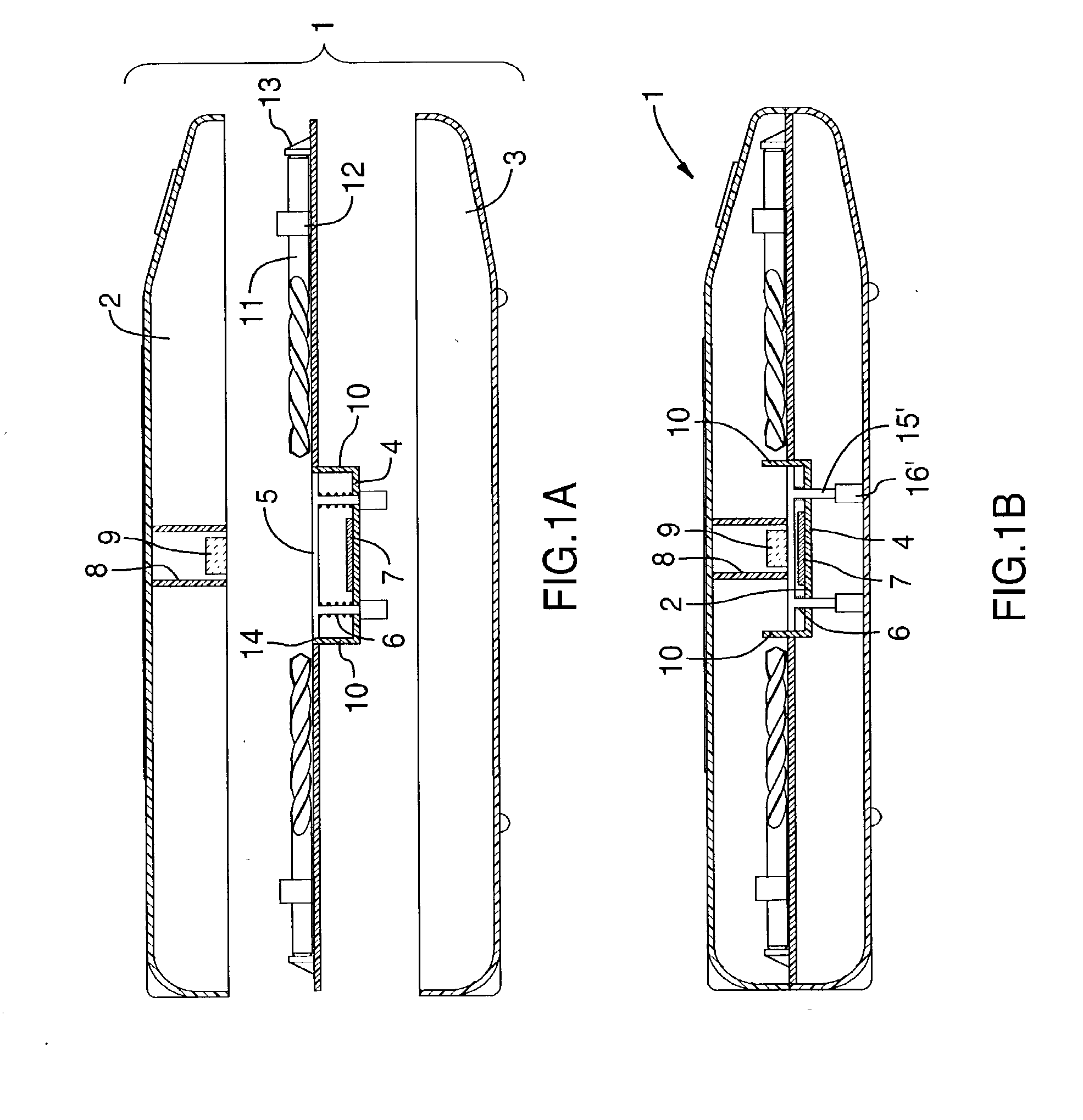Tool cases with easy removal of stored items
a tool case and storage box technology, applied in the field of tool cases, can solve the problems of difficult removal of stored items, and achieve the effect of convenient removal of stored items and convenient storag
- Summary
- Abstract
- Description
- Claims
- Application Information
AI Technical Summary
Benefits of technology
Problems solved by technology
Method used
Image
Examples
second embodiment
[0076]FIGS. 2A to 2C show a second embodiment, having a floating panel 5′ arranged between the top lid 2 and base portion 3. The panel has hollow protrusions 16 which receive posts 15, preferably molded into the base 3 and the panel is supported by biasing means 6, for example springs. There are stops 10′ preferably integrally molded in the base that reach the height of the panel when the lid is open and the panel is fully pressed away from the base by the biasing means. When the lid is closed, ribs 17 preferably molded on the inside of the lid press the panel towards the base and the tip of the stops 10′ protrude through slots 18 in the panel to act as further end stops for the components (similar to the fingers described above). Thus, when the lid is open, the panel is urged upwards and clears the stops molded in the base facilitating removal of components, as the lid is closed, the ribs inside the lid depress the panel exposing the stops beyond the ends of the components making i...
third embodiment
[0077]FIGS. 3A to 3B show a third embodiment, having a panel 5″ between the top lid 2 and base portion 3. Fixed end stops 13 are used to prevent the components 11 from sliding too much in the panel. The end stops are preferably molded in the panel. The component is placed on the panel and held in place by a combination of a clip 12′ and a bridge 12. The bridge is used to align the component during insertion into the tool case / clip. Beneath one end 11′ of the components are depressions 19 in the panel 5″. To remove a component, the one end 11′ is pushed down into the depression. This elevates the opposite end of the component, freeing it from the clip 12′ but still restrained by the bridge 12. The component can then be easily pulled out for use.
[0078]FIGS. 4A to 4B show a fourth embodiment of a tool case 1 similar to the third embodiment. Some end stops 13′ are not part of the panel, but rather a double-walled construction is used on the lid. This provides immobility for the part whe...
eighth embodiment
[0083]FIGS. 8A to 8F show an The panel has recesses (omitted for clarity) accommodating at least one pivotable holder 26. Components 11 are placed in the pivotable holder, which is then attached to the panel by means of pivot pins 27 (preferably molded on the sides of the pivotable holder) and mounting holes (not shown) through side walls 28 of the recesses. The pivot points are located such that the holder 26 pivots up to expose the components in their free position, when the lid 2 is open. The holder preferably have an enclosed end 29, an open end 30 and a hold down bar 31. The components are inserted into the holder via the open end and securely held by the enclosed end in cooperation with the hold down bar. The holder further has an extension arm 32, preferably integrally molded with the holder, on one side of said holder protruding from the open end 30. The lid has an activation ridge 33, preferably integrally molded with the lid, on an inside edge of the lid. Upon closing, th...
PUM
 Login to View More
Login to View More Abstract
Description
Claims
Application Information
 Login to View More
Login to View More - R&D
- Intellectual Property
- Life Sciences
- Materials
- Tech Scout
- Unparalleled Data Quality
- Higher Quality Content
- 60% Fewer Hallucinations
Browse by: Latest US Patents, China's latest patents, Technical Efficacy Thesaurus, Application Domain, Technology Topic, Popular Technical Reports.
© 2025 PatSnap. All rights reserved.Legal|Privacy policy|Modern Slavery Act Transparency Statement|Sitemap|About US| Contact US: help@patsnap.com



